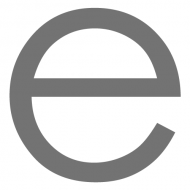RIP Power Editor
It’s finally here. :’( As promised back in September, Facebook has merged its Power Editor platform with the more familiar, user-friendly Ads Manager. For those of us advertisers who self-identify as “power users,” this may be somewhat of a disappointment, but from a functional standpoint, it’s most likely for the best. Read on to learn why.
When Did Facebook Remove Power Editor?
Though the coming update was announced last year, many advertisers in North America didn’t see the change in their own accounts until recently – that is, January or early February. (Reportedly the feature was available sooner in other markets.)
What Did The Update Change?
As Facebook outlined in their blog announcement, the main outcome of this update is that advertisers can now pick the workflow that suits them best- whether it’s the faster, easier-to-scale Power Editor style (now called “quick creation” flow) or the more accessible “guided creation” flow of the previous Ads manager format. Facebook will move you into the workflow that matches the platform you used most in the past, but you have the option to switch workflows throughout the creation process. New users will select their preferred workflow when first opening the interface.
Facebook also included the automatic draft feature from Power Editor, which ensures that any campaign will be auto-backed up on Facebook’s server. This is an always-welcome addition that just makes life easier when building out campaigns, although it does mean advertisers now must review their campaign from a saved draft state before publishing.
One-Stop Reporting
The reporting capabilities of each separate interface have been merged as well, which is a relief if you were previously building out different reports for campaigns you managed more in Power Editor than in Ads Manager. Ads Manager was great for simple breakdowns, summaries, and quick insights, but Power Editor made more comprehensive charts available and also included a more detailed activity history. Now they’ve been consolidated, which definitely helps streamline the ad management process and also makes it easier both to report directly to clients and to teach reporting any advertisers new to Facebook’s platform.
What Power Editor Features are Missing?
According to Facebook, there should be nothing different about the new interface “except the name.” So, fans of the old platform shouldn’t have much to complain about other than the slight readjustment to a new visual layout. All prior functionality across both platforms has been retained in the new combined interface.
Why Did Facebook Merge The Two Platforms?
Facebook clearly intends to combine the dead-simple usability of their wildly popular and successful Ads Manager interface with the “power” features under the hood friendlier to serious advertisers who are used to more complex platforms. (In keeping with the race to the middle, Google is quite transparently doing the opposite, with AdWords these days borrowing more than a few tricks from Facebook.)
The move makes sense, as it was confusing in the first place to have two interfaces and many people didn’t know Power Editor even existed. (For some of us, it was a secret weapon.) But with the curtain lifted and their powers combined, the new interface will likely draw even more aspiring advertisers, from all backgrounds and skill levels. The message is clear: Facebook’s new platform is the future of advertising, and everyone is welcome – power user or not.

